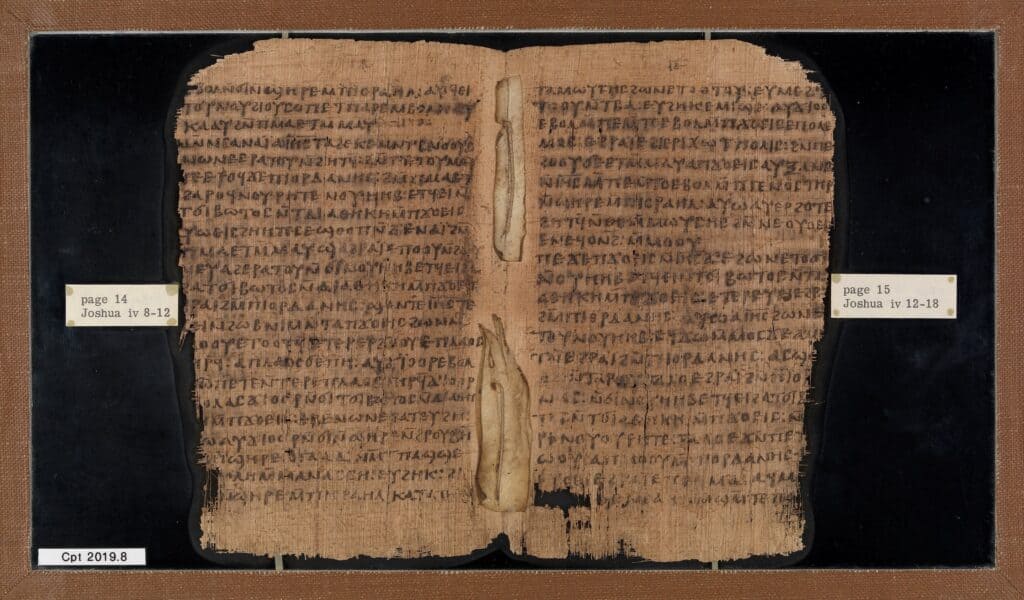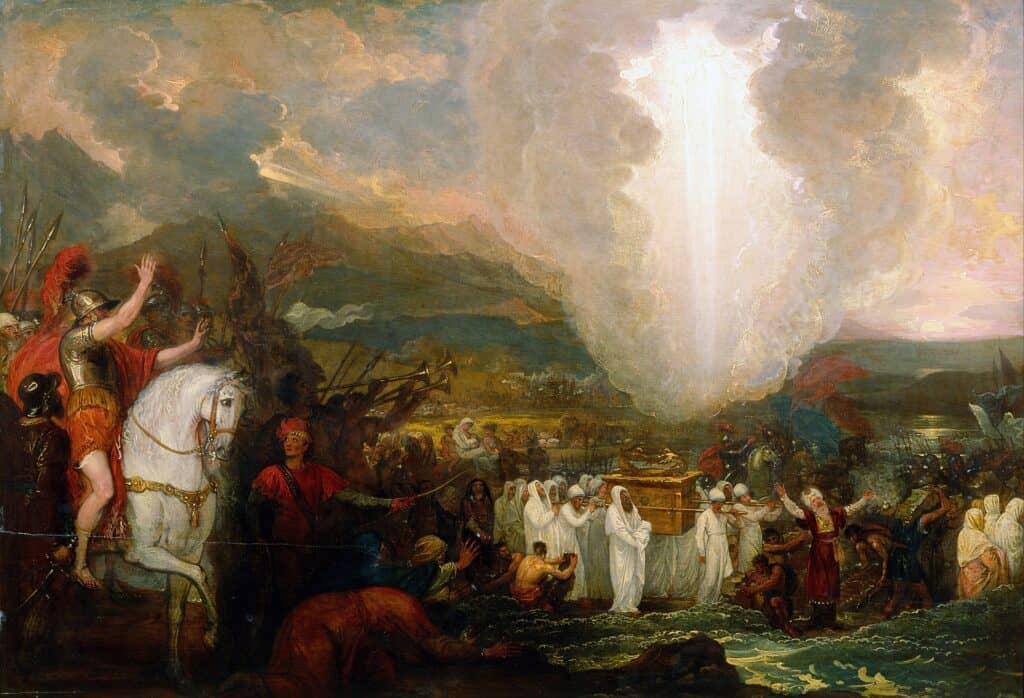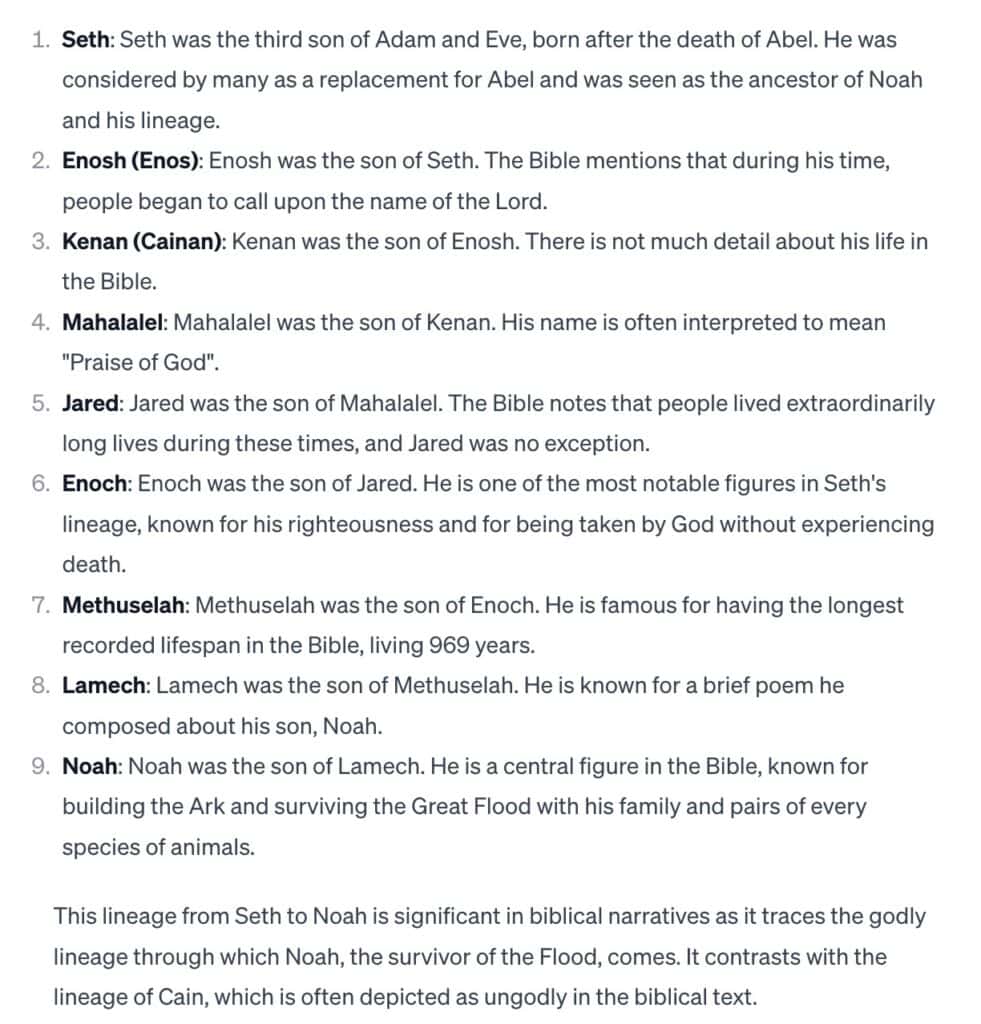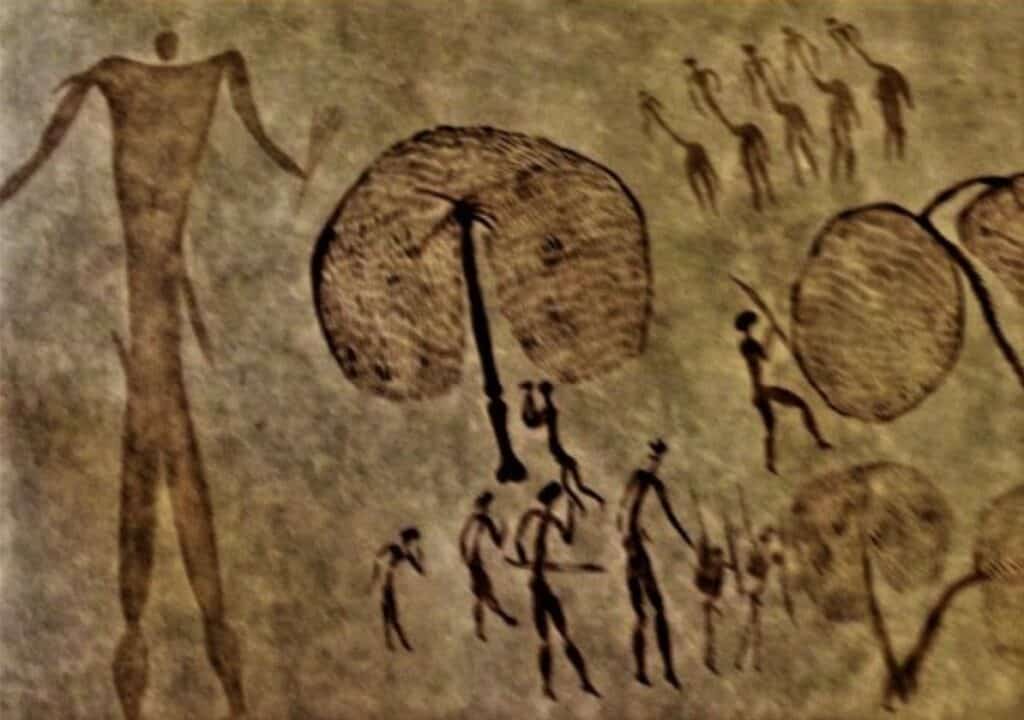Table of Contents
- Concept
- The Nephilim
- Genesis 6:4
- The Book of the Watchers (1 Enoch 1 – 36)
- The fallen ones
- The descendants of Anak come from the Nephilim
- The battles in Canaan
- Offspring of Orion
- Nephilem vs Nephites
- Nephilim
- Nephites
- Nephi, Alma, and Mosiah
- The lineage of Seth leading to Noah
- Diana’s Vow, Zimbabwe
- Nephilim and Anakim in the Land of Canaan
- Etymology of Nephilim
- Nephilim versus Jabbarin or Gibborim
Concept
- The Nephilim are the offspring of the Anunnaki (Aesir) and human women.
- They were called the “Sons of God” or “The fallen ones.”
- It is suggested that the Nephilim were the Anunnaki who stayed on Earth.
- They were giants compared to humans.
- The descendants of Seth and Cain, including the Anunnaki like Noah, aimed to preserve their bloodline through humans.
- The Nephilim lived in the land of Canaan.
The Nephilim
The Nephilim (/ˈnɛfɪˌlɪm/; Hebrew: נְפִילִים Nəfīlīm) are mysterious beings or people in the Hebrew Bible who are described as being large and strong. The Hebrew word Nephilim is sometimes translated as “giants“, and sometimes taken to mean “the fallen ones”. Their origins are disputed. Some view them as offspring of fallen angels and humans. Others view them as offspring of the descendants of Seth and Cain.
Genesis 6:4
[4] There were giants, in the earth in those days; and also after that, when the sons of God Assendence of Aesir came in unto the daughters of men human, and they bare children to them, the same became mighty men human which were of old, men human of renown – Methuselah, Lamech, Adam, Seth..
The Book of the Watchers (1 Enoch 1 – 36)
The first part of the book is about “The Watchers“, a group of “angels sent to earth to watch over humans. 200 of those angels committed transgression by having sex with humans, creating a hybrid race called the Nephilim.
Of the Nephilim it is said that they were giants and savages that endangered and pillaged humanity.
It is said that the “Watchers” taught humans reading, writing, weaponry, cosmetics, sorcery, about the stars, meteorology, and many other arts and that this was problematic because it robbed humans the opportunity to discover the arts by themselves.
They “revealed the eternal secrets which were preserved for heaven, which men were striving to learn.” the book says.
“The Gods” were not pleased about the intervention of “The Watchers” in human affairs. (The same story of interventionists vs. non-interventionists is told in Greek Mythology, Sumerian Mythology as well as various Asian myths about the old days of mankind). Apparently there were also experiments in cross-breeding between animals and humans going on.
“And they became pregnant, and they bare great giants, whose height was three thousand ells: Who consumed all the acquisitions of men. And when men could no longer sustain them, the giants turned against them and devoured mankind. And they began to sin against birds, and beasts, and reptiles, and fish, and to devour one another’s flesh, and drink the blood.”
And then Michael, Uriel, Raphael, and Gabriel looked down from heaven and saw much blood being shed upon the earth, and all lawlessness being wrought upon the earth. And they have gone to the daughters of men upon the earth, and have slept with the women, and have defiled themselves, and revealed to them all kinds of sins. And the women have borne giants, and the whole earth has thereby been filled with blood and unrighteousness.
Disgusted by all this, “the Gods” decided to have a Great Flood to rid the earth of the Nephilim and other ghastly creatures (according to the Book of Enoch. The Bible says that the Nephilim are bound “in the valleys of earth” – beneath the earth?- until Judgement day).
The fallen ones
The term “Nephilim” is often translated as “fallen ones” in some interpretations of the Hebrew Bible. This translation stems from the root of the Hebrew word “naphal,” which means “to fall.” However, the exact meaning of “Nephilim” in the context of the biblical texts is somewhat debated among scholars.
There are a few interpretations of why the Nephilim are referred to as the “fallen ones”:
- Descendants of Fallen Angels: One interpretation is that the Nephilim were the offspring of “the sons of God” and human women, as mentioned in Genesis 6:4. In this context, “the sons of God” are often interpreted as fallen angels, and thus their offspring were called “Nephilim” or “fallen ones,” reflecting the fallen state of their angelic fathers.
- Mighty but Fallen: Another interpretation suggests that “Nephilim” refers to their great size and might (they were described as “the heroes of old, men of renown”), but also their moral or spiritual fall. They could have been considered “fallen” in a moral sense, possibly due to their violent or corrupt natures.
- Fallen in Battle: Some scholars suggest that “Nephilim” could refer to their fate as warriors who fell in battle. This interpretation aligns with their depiction as “men of renown,” suggesting their fame might have been in martial prowess.
- Etymological Debate: It’s important to note that the translation and interpretation of ancient texts, especially those as old and as contextually complex as the Hebrew Bible, often involve a degree of conjecture and debate. The term “Nephilim” and its translation as “fallen ones” is one such example where scholars might not fully agree on the interpretation.
This is the key verse where Nephilim are mentioned. It states:
“The Nephilim were on the earth in those days, and also afterward, when the sons of God went to the daughters of humans and had children by them. They were the heroes of old, men of renown.” This verse suggests that the Nephilim were the offspring of the “sons of God” and human women.
Genesis 6:4
In this verse, the Nephilim are mentioned again in the context of the Israelite spies reporting back about the land of Canaan. They say, “We saw the Nephilim there (the descendants of Anak come from the Nephilim). We seemed like grasshoppers in our own eyes, and we looked the same to them.” This suggests that the Nephilim were of great size and stature.
Numbers 13:33
The descendants of Anak come from the Nephilim
The Anakim (referred to as “Anak”) are a group of people mentioned in the Hebrew Bible. They are described as a race of giants, descendants of Anak, and are associated with the land of Canaan. The term “Nephilim” is also used in the Bible, particularly in the Book of Genesis, and is often associated with giants or mighty warriors of ancient times.
“We saw the Nephilim there (the descendants of Anak come from the Nephilim),” is from the Book of Numbers in the Old Testament. This statement was made by the Israelite spies sent by Moses to explore the land of Canaan. The spies reported back that they saw the Anakim there, a formidable race of giants, causing fear among the Israelites.
In biblical accounts, the Anakim are described as a powerful, tall, and intimidating people, contributing to the Israelites’ initial reluctance to enter the Promised Land. Over time, the Anakim were either driven out or assimilated into other populations in the region. The stories of the Anakim, like many in the Hebrew Bible, blend historical elements with mythological and symbolic narratives.
The battles in Canaan
It was under Joshua’s leadership, Moses’ successor, that the Israelites engaged in battles in Canaan, including conflicts with the inhabitants of the land, which would have included the Anakim. These events are detailed in the Book of Joshua. The Anakim were said to be concentrated in several cities in Canaan, and the Israelites, according to the biblical account, eventually defeated them and took control of these areas.

Early 4th-century CE manuscript of Joshua from Egypt, in Coptic translation.

Joshua passing the River Jordan with the Ark of the Covenant, painted by Benjamin West, 1800
Offspring of Orion
In Aramaic culture, the term Nephilim refers to the offspring of Orion in mythology.
Nephilem vs Nephites
Nephilim
The Nephilim are mentioned in the Hebrew Bible, specifically in the Book of Genesis (Genesis 6:1-4) and the Book of Numbers (Numbers 13:33). They are described as the offspring of the “sons of God” and the “daughters of men” before the Flood. The exact nature of the Nephilim is the subject of various interpretations and debates among scholars. Some interpret them as giants, others as fallen angels or powerful rulers. Their mention in the Bible is brief and somewhat enigmatic, leading to a variety of interpretations in Jewish and Christian traditions.
Nephites
The Nephites, as mentioned earlier, are a people described in the Book of Mormon, a text central to the Latter Day Saint movement founded by Joseph Smith in the 19th century. The Nephites are said to be descendants of Nephi, a prophet who migrated from Jerusalem to the Americas around 600 BC. The narrative of the Nephites is contained entirely within the context of the Book of Mormon and is separate from the biblical narrative.
The Nephilim are part of ancient Jewish and Christian traditions and are mentioned in the Bible, a text with roots going back thousands of years. The Nephites are part of the Latter Day Saint movement and are mentioned in the Book of Mormon, published in 1830.
The Nephilim are mentioned in the context of early Genesis narratives, while the Nephites are part of a story that claims to describe the history of ancient peoples in the Americas.
The Nephilim have been a part of Judeo-Christian lore and theological discussions for centuries, with varied interpretations. The Nephites, on the other hand, are specific to the Latter Day Saint movement and its teachings.
Nephi, Alma, and Mosiah
The book is divided into smaller books, each named after its main named narrator or protagonist, such as Nephi, Alma, and Mosiah. It also includes the words of prophets and leaders.
The lineage of Seth leading to Noah

Diana’s Vow, Zimbabwe

Above is the killing of a Nephilim Giant at Diana’s Vow, Zimbabwe. Note the
position of the legs. His wife lies next to him. Source

Above — The giant Nephilim at Lake Chivero, Zimbabwe. The Igigi herds the Little People on the bottom of the picture whilst the Afro-Atlanteans look on. The five beings at the top right of the picture are the Lemurian Race. It was their DNA crossed with Anunnaki DNA that was to produce the “Slave Race” (the Little People). Source
Nephilim and Anakim in the Land of Canaan
Numbers 13 is the key passage on giants in the land of Canaan. When Israel left Egypt and was in the wilderness seeking to enter the Promised Land, Moses sent 12 Israelite spies (one from each tribe) to Canaan. The spies were to scout out the land and assess “whether the people who dwell in it are strong or weak” (Numbers 13:18). The spies returned to Moses after 40 days and gave a good report about the land—“It flows with milk and honey, and this is its fruit” (Numbers 13:27). However, they gave a bad report about the people in the land:
However, the people who dwell in the land are strong, and the cities are fortified and very large. And besides, we saw the descendants of Anak there. The Amalekites dwell in the land of the Negeb. The Hittites, the Jebusites, and the Amorites dwell in the hill country. And the Canaanites dwell by the sea, and along the Jordan (Numbers 13:28-29).
Etymology of Nephilim
Ronald Hendel states that it is a passive form: ‘ones who have fallen’, grammatically analogous to paqid ‘one who is appointed’ (i.e., a deputy or overseer), asir ‘one who is bound’ (i.e., a prisoner), etc.
The Hebrew nefilim means literally “the fallen ones”
Given the complex meaning of the nefilim which emerged from the three interconnected biblical passages (human–divine hybrids in Genesis 6, autochthonous people in Numbers 13 and ancient warriors damned in the underworld in Ezekiel 32), the Greek translators recognized some similarities. First and foremost, both nefilim and gigantes possessed an ambiguous identity, being a mixture of the human and divine. They were also viewed with fascination and moral contempt. Secondly, both were presented as impersonating chaotic qualities and posing some serious danger to gods and humans. Lastly, both gigantes and nefilim were clearly connected with the underworld and were said to have originated from earth, and they both end up closed therein.
In 1 Enoch, they were “great giants, whose height was three hundred cubits”. Because cubit is 18 inches (46 cm), this would make them 450 feet (137.16 meters) (140 m) tall.
The majority of ancient biblical translations – including the Septuagint, Theodotion, Latin Vulgate, Samaritan Targum, Targum Onkelos, and Targum Neofiti – interpret the word to mean “giants”. Symmachus translates it as “the violent ones” and Aquila’s translation has been interpreted to mean either “the fallen ones” or “the ones falling [upon their enemies]“
J. C. Greenfield similarly believes that Nephilim lore is based on “the negative aspects of the Apkallu tradition” in Sumerian mythology. The Apkallu were seven antediluvian culture heroes who were praised for their exceptional wisdom. In fact, some were even called the son of Ea.
And there we saw the Nephilim, the sons of Anak, who come of the Nephilim; and we were in our own sight as grasshoppers, and so we were in their sight.
Numbers 13:32–33
They lie with the warriors, the Nephilim of old, who descended to Sheol with their weapons of war. They placed their swords beneath their heads and their shields upon their bones, for the terror of the warriors was upon the land of the living.
Ezekiel 32:17–32
“And when the angels, the sons of heaven, beheld them, they became enamoured of them, saying to each other, Come, let us select for ourselves wives from the progeny of men, and let us beget children.”
Enoch 7:2
And it came to pass when the children of men had multiplied that in those days were born unto them beautiful and comely daughters. And the angels, the children of the heaven, saw and lusted after them, and said to one another: “Come, let us choose us wives from among the children of men and beget us children.” And Semjaza, who was their leader, said unto them: “I fear ye will not indeed agree to do this deed, and I alone shall have to pay the penalty of a great sin.” And they all answered him and said: “Let us all swear an oath, and all bind ourselves by mutual imprecations not to abandon this plan but to do this thing.” Then sware they all together and bound themselves by mutual imprecations upon it. And they were in all two hundred; who descended in the days of Jared on the summit of Mount Hermon, and they called it Mount Hermon, because they had sworn and bound themselves by mutual imprecations upon it …
Book of Enoch
In addition to Enoch, the Book of Jubilees (7:21–25) also states that ridding the Earth of these Nephilim was one of God’s purposes for flooding the Earth in Noah’s time. These works describe the Nephilim as being evil giants.
…and the Offspring of Seth, who were upon the Holy Mount, saw them and loved them. And they told one another, ‘Come, let us choose for us daughters from Cain’s children; let us bear children for us.
Henok 2:1–3
Nephilim versus Jabbarin or Gibborim
The Quran refers to the people of Ād in Quran 26:130 whom the prophet Hud declares to be like jabbarin (Hebrew: gibborim), probably a reference to the Biblical Nephilim. The people of Ād are said to be giants, the tallest among them 100 ft (30 m) high. However, according to Islamic legend, the ʿĀd were not wiped out by the flood, since some of them had been too tall to be drowned. Instead, God destroyed them after they rejected further warnings. After death, they were banished into the lower layers of hell (the underground).
Likewise, a long-held view among some Christians is that the “sons of God” were the formerly righteous descendants of Seth who rebelled, while the “daughters of men” were the unrighteous descendants of Cain, and the Nephilim the offspring of their union.
Nephilim referred to certain human males from the lineage of Seth, who were called sons of God probably in reference to their prior covenant with Yahweh (cf. Deuteronomy 14:1; 32:5); according to these sources, these men had begun to pursue bodily interests, and so took wives of “the daughters of men”, e.g., those who were descended from Cain or from any people who did not worship God.
The “Sons of Seth view” is also the view presented in a few extra-biblical, yet ancient works, including Clementine literature, the 3rd century Cave of Treasures, and the c. 6th century Ge’ez work The Conflict of Adam and Eve with Satan. In these sources, these offspring of Seth were said to have disobeyed God, by breeding with the Cainites and producing wicked children “who were all unlike”, thus angering God into bringing about the Deluge, as in the Conflict:
Certain wise men of old wrote concerning them, and say in their [sacred] books that angels came down from heaven and mingled with the daughters of Cain, who bare unto them these giants. But these [wise men] err in what they say. God forbid such a thing, that angels who are spirits, should be found committing sin with human beings. Never, that cannot be. And if such a thing were of the nature of angels, or Satans, that fell, they would not leave one woman on earth, undefiled … But many men say, that angels came down from heaven, and joined themselves to women, and had children by them. This cannot be true. But they were children of Seth, who were of the children of Adam, that dwelt on the mountain, high up, while they preserved their virginity, their innocence and their glory like angels; and were then called ‘angels of God’. But when they transgressed and mingled with the children of Cain, and begat children, ill-informed men said, that angels had come down from heaven, and mingled with the daughters of men, who bear them giants.
Fallen angels were believed by Arab pagans to be sent to earth in form of men. Some of them mated with humans and gave rise to hybrid children. As recorded by Al-Jahiz, a common belief held that Abu Jurhum, the ancestor of the Jurhum tribe, was actually the son of a disobedient angel and a human woman.
In some readings of the non-canonical texts, the Nephilim are children whose father is an angel and whose mother is a human and they are the “giants” (also known as Gibborim) referred to in the canonical Book of Numbers.[12] In others, angels and human women produce children who are Gibborim, and the Nephilim have fathers who are Gibborim and human mothers
In The Book of Giants we find:
Their even more corrupt offspring, the giants, were variously called thereafter nephilim, gibborim, or rephaim, being the earthly half-breed races that fought against God and his righteous followers whose numbers diminished as the world was overwhelmed with corruption and evil.
The Book of Giants is an expansive narrative of the biblical story of the birth of “giants” in Genesis 6.1-4. In this story, the giants came into being when the Watcher “sons of God” (who, per the story’s corroborative Jubilees account [Jub 4:15; 5:6],[5][19] God originally dispatched to earth for the purpose of instructing and nurturing humanity “in proper ritual and ethical conduct,” “to do what is just and upright upon the earth”) were seduced by and had sexual intercourse with human women, who then birthed a hybrid race of giants. These Watchers (grigori) and giants (nephilim) engaged in destructive and grossly immoral actions which devastated humanity, including the revealing of heaven’s holy “secrets” or “mysteries to their wives and children” and to mankind generally.
